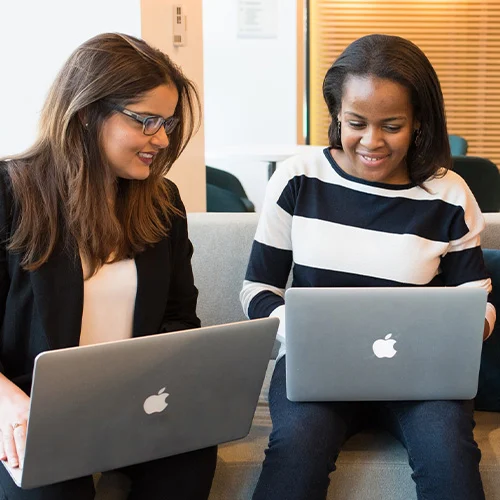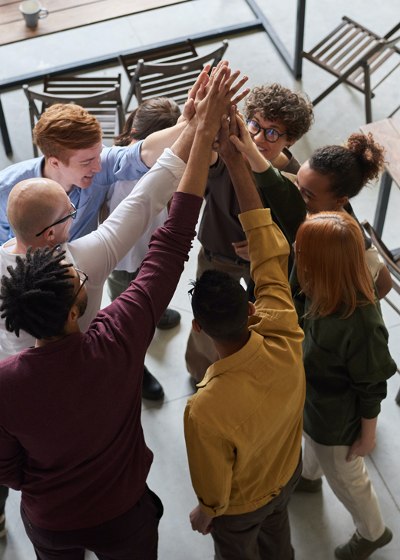Top Tips for Building a Culture of Learning and Belonging
Pamay M. Bassey, Chief Learning & Diversity Officer at Kraft Heinz, has led an impressive cultural transformation over the past 3 years to build a culture of learning and belonging, which has led the organization to fully embraced sustainability, quality, and customer-centricity.
Her interview at our The New Role of Leadership in a Changing Workplace half-day summit was so impactful that we want to share our favorite takeaways.
How did you build a culture of learning in your organization?
If you democratize access to learning, you create a learning environment where you say everybody matters. Everybody can embrace learning as their superpower and expose themselves to whatever learning they can to unleash their creativity, tap into their curiosity, and share whatever it is that they may be learning. That’s where innovation comes from.

Through modeling, people across the organization realize the impact made if you make time for learning. And that’s the foundation of the culture where everybody is participating and making that choice to be a lifelong learner.
Anytime a senior leader sees that there’s passion and fire coming from some area of the organization, it’s hard to ignore.
How can you make the business and cultural case to the decision-makers to create a culture of learning in their organization?
I am a big believer in the fact that you should start before you are ready. When I joined Kraft Heinz, I thought, “How am I going to make an impact as a Chief Learning Officer?” People talk about influencing without authority, but I actually had some authority. If I showed how learning impacted my life and what it looked like literally to be a lifelong learner, others would join. A lot of times we talk about getting buy-in at the top of the house first, but you can have a grassroots movement.
Then my boss was like, “What’s going on? People are getting really excited. I’m hearing people talking about learning.” We talk about being creative, start before you’re ready, and find a way to model the change you’re looking to encourage others to adopt. As there’s momentum, you start to amplify and communicate the stories that come out of that movement. Anytime a senior leader sees that there’s passion and fire coming from some area of the organization, it’s hard to ignore.
How are you measuring the impact of your efforts?
First of all, there are many stories. When we launched Learn Like an Owner, we had a retreat where the top 30 learners came to Chicago for professional development together. One of my favorite things from that group of ambassadors was when someone said, “We saw a culture of generosity emerging.” I didn’t engineer generosity as part of the program, but part of the ask is to share what you’ve learned. Learn, reflect, share. If I read something and I think, “You know what? This is not useful for me, but I know Will is working on this problem. This article could be really helpful for him, and I send it to him.”

We have this corporate university where we have resources of all types. Everybody has access to it. The number of people who are accessing it is going up. People are proactively visiting where, before, it was much more reactive. Therefore, I can show you the numbers and say, from 2018 to today, what the curve looks like in terms of people who are actively requesting learning.
Another amazing part is building professional skills. I had one employee who moved from one area of business to the other and he said, “I went to Ownerversity to figure out the fundamentals of my new function.” Now we’re getting into technical learning, going beyond professional development and leadership skills to, “Let me see what’s in this learning environment that’s related to my job.” We’re making the pivot to specifically developing the capabilities necessary to drive our strategy and support the direction of the business now. We have a foundation of people who are thinking of themselves as learners.
Growing requires coaching, operating with empathy and care requires coaching, and frankly, even moving, getting the stuff done with speed and agility requires coaching.
What is the role of coaching in a culture of learning?
Coaching is very important. We have expectations of our managers to be coaches. We have a set of leadership principles for our managers. We expect them to operate with empathy and care, to move with speed and agility, and to grow people to their full potential. Growing requires coaching, operating with empathy and care requires coaching, and frankly, even moving, getting the stuff done with speed and agility requires coaching.

Inclusion is a choice to learn about people that have different lived experiences than you, to let what you learn change the way that you lead, and to commit to learning something new about people who perhaps don’t walk through the world the way that you do.
Why do learning and diversity go so well together?
When I had the opportunity to expand to be Chief Learning and Diversity Officer, it made a lot of sense to me because I say diversity is a fact. It’s happening. There are people from different walks of life, different backgrounds.
Inclusion is a choice to learn about people that have different lived experiences than you, to let what you learn change the way that you lead, and to commit to learning something new about people who perhaps don’t walk through the world the way that you do.

Belonging is then the outcome, which is psychological safety. I’m in a space where I feel like I can speak up, we can all have a conversation, and take the best of all of our ideas. The combination of learning and encouraging people to celebrate diversity and practice being inclusive makes a whole lot of sense to me.
The world is changing. If you’re not curious about how to solve old problems in new ways, you will not survive.
How do you spark curiosity in your culture of learning?
As a Chief Learning Officer, my responsibility is to create a culture of continuous learning and hold creativity and intellectual curiosity. Curiosity and creativity have become part of the conversation about how we are going to change, grow, and evolve.
Our company is changing, business is changing, the world is changing. If you’re not curious about how to solve old problems in new ways, you will not survive. Disruption happens when you say, “This old problem that we’ve been solving the same way for hundreds of years, what if we solve it this way?”
It’s about being curious that there is a different way and listen to the types of solutions that might be coming, that inclusivity piece, where you make a safe space here to have that conversation. The conversation around creativity and curiosity is happening at Kraft Heinz and continuing to encourage our leaders to be inclusive to hear the perspectives of every employee no matter where they sit in the organization. It’s something that it’s being encouraged from our CEO on down and I believe it’s changing the culture of the company.
Are You Ready?
Get in touch with us to schedule a demo and see how AceUp can help you build a premier coaching program for your top talent.